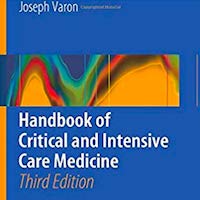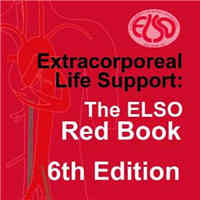Tag: hypertension
Unfractionated Heparin (UFH), LMWH, Fondaparinux, Argatroban, and Bivalirudin
Unfractionated heparin (UFH) binds to anti-thrombin III (AT-III), which enhances antithrombin's inhibition of several coagulation factors – especially factor Xa and factor IIa (thrombin). Low Molecular-Weight Heparin... read more
VExUS Ultrasound Score – Fluid Overload and Venous Congestion Assessment
Proper fluid management while avoiding fluid overload can be one of the most difficult parts of practicing medicine. Unfortunately, many physicians using ultrasound mainly rely on Inferior Vena Cava (IVC) measurements to... read more
How I Manage Drainage Insufficiency on ECMO
As the use of extracorporeal membrane oxygenation (ECMO) expands, a systematic approach to the management of complex technical issues, such as drainage insufficiency, is essential to improving patient outcomes. Due to... read more
Pretreating Transfused Erythrocytes with NO Prevents Pulmonary Hypertension
Researchers at Massachusetts General Hospital (MGH; Boston, USA), Harvard Medical School (HMS; Boston, MA, USA), and other institutions conducted a trial to see if treating stored packed sheep RBCs with NO before transfusion... read more
Human-to-Human Transmission of a Novel Coronavirus in Vietnam
This article describe transmission of Coronavirus from a father, who had flown with his wife from Wuhan to Hanoi, to his son. The findings suggest that the incubation period in the son may have been 3 days or less. On... read more
The Neurohormonal Basis of Pulmonary Hypertension in HFpEF
Subjects with heart failure with preserved ejection fraction (HFpEF) display activation of the endothelin and adrenomedullin neurohormonal pathways, the magnitude of which is associated with pulmonary hemodynamic derangements,... read more
Serum Creatinine in the Critically Ill Patient With Sepsis
A 73-year-old man underwent esophageal resection for cancer. He had a history of hypertension that was treated with an angiotensin receptor blocker. Preoperative estimated glomerular filtration rate (GFR) was 98 mL/min/1.73... read more
Use of Levosimendan in ICU Settings
Levosimendan has been demonstrated to have potential utility in a range of critical illness scenarios. It must be acknowledged, however, that in each sphere of application, the evidence is incomplete or indicative rather... read more
Idiopathic Intracranial Hypertension
A 22 year-old female with a medical history of migraines and obesity who presents to the Emergency Department with a headache. Her headache was gradual in onset, but has progressively worsened and has not been relieved... read more
Pretreating red blood cells with nitric oxide may reduce side effect linked to transfusions
A new treatment may diminish a dangerous side effect associated with transfusions of red blood cells (RBCs) known as pulmonary hypertension, an elevated blood pressure in the lungs and heart that can lead to heart failure.... read more
Pediatric Hypertension and Hypertensive Emergencies: Recognition and Management in the Emergency Department
Pediatric hypertension generally presents to the ED in 2 forms: (1) the otherwise asymptomatic child with elevated blood pressure, and (2) the child with a true hypertensive emergency. This issue provides recommendations... read more
Incidence, Severity, and Detection of Blood Pressure Perturbations after Abdominal Surgery
Intraoperative and postoperative hypotension are associated with myocardial and kidney injury and 30-day mortality. Intraoperative blood pressure is measured frequently, but blood pressure on surgical wards is usually measured... read more
Management of Pediatric Severe Traumatic Brain Injury
This article provides an algorithm of clinical practice for the bedside practitioner based on the available evidence, treatment protocols described in the articles included in the 2019 guidelines, and consensus that reflects... read more
Overuse of troponin? A comprehensive evaluation of testing in a large hospital system
Troponin assays are integral to the diagnosis of acute myocardial infarction (AMI), but there is concern that testing is over utilized and may not conform to published guidelines. We reviewed all testing performed at 14 hospitals... read more
Predicting AKI using urinary liver-type fatty-acid binding protein and serum N-terminal pro-B-type natriuretic peptide levels in patients treated at medical cardiac ICUs
Urinary L-FABP and serum NT-proBNP levels on admission are independent predictors of acute kidney injury (AKI), and when used in combination, improve early prediction of AKI in patients hospitalized at medical cardiac intensive... read more
Plasma Volume, Tissue Oedema, and the Steady-state Starling Principle
The Michel–Weinbaum steady-state Starling principle has important consequences for clinical practice. The hope that biophysical intravascular colloid therapy with albumin or plasma substitutes can deliver plasma volume... read more
Ultrasound Non-invasive Measurement of Intracranial Pressure in Neurointensive Care
Of the studied ultrasound nICP methods, ONSD is the best estimator of Intracranial Pressure (ICP). The novel combination of ONSD ultrasonography and vTCD of the straight sinus is a promising and easily available technique... read more
Pheochromocytoma Diagnosis
Pheochromocytoma is a catecholamine-producing tumor that originates from chromaffin cells of the adrenergic system, most commonly in the adrenal medulla. There are two main steps in the diagnosis of pheochromocytoma: biochemical... read more
The Elevated Troponin: What else besides ACS could cause troponin elevation?
The increased troponin used to be a straight ticket to the cardiology service. Now, the picture isn't so clear. What do you need to consider in the patient with elevated troponin? Cardiac troponins consist of three proteins:... read more
Resuscitation of Pulmonary Hypertension and RV Failure
A guide to the initial emergency department management of patients with pulmonary hypertension and right ventricular failure. It is very rare for my to write about pathophysiology, but understanding the pathophysiology of... read more
Emergency Management of Intracerebral Hemorrhage – The Golden Hour
There is a kind of self-fulfilling prognostic pessimism when it comes to Intracerebral Hemorrhage. And this pessimism sometimes leads to less than optimal care in patients who otherwise might have had a reasonably good outcome... read more
Johns Hopkins Investigators Unravel Biological Roots of Pulmonary Hypertension
Working with cells that line the innermost layer of the blood vessels, Johns Hopkins investigators say they have made a leap forward in understanding the underlying biology behind pulmonary hypertension, a dangerous type... read more









